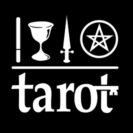Tarot and strategy? Games of chance to decide the next move nevertheless require strategy to win. Remember playing Ludo as a child? Depending on the roll of a dice, which counter your move is critical to winning or losing. Monopoly is another classic example. I found that the orange set of streets with houses and hotels was always a good idea and not owning the expensive Mayfair and Park Lane. Military gaming also requires several dice to decide the nature of the action. Tarot spreads such as the Celtic Cross cut that uncertainty.
While clients may appreciate security and continuity, the nature of these spreads eliminates exploring other, better outcomes and strategies. Life is never as simple and straightforward as the representation in these spreads, and as a result, we fail our clients.
Strategy and Opening of the Key Tarot spread
The Opening of the Key spread in contrast, returns the power of randomization to the reading. How does it do that? By having all 78 cards available in sequence, and by knowing the count we can explore the complexities and possible outcomes available. In many respects, the OOTK spread is more powerful than throwing dice, as it represents parallel outcomes, not the sequential linear possibilities of the dice. The reader can follow different timelines and the way that different people and characters in the drama act out their parts.
Understanding the strategy is key here. The classic game of using dice is backgammon, where the aim is simple – get your pieces to the home and bear them off before your opponent. In tarot terms, this is how positional spreads such as the Celtic Cross spread works. Winning at backgammon is to maximise the power of your own pieces and simultaneously minimise the power of your opponent’s position. When the game starts neither player knows what strategy he will use – it is only after a few moves that a pattern will start to emerge. Within a few throws of the dice, the strategy can change dramatically. As any backgammon player will tell you, the game is a mixture of luck, skill, and foresight, and knowledge of percentages and statistics.
There, I have said it, mathematics is a scary subject, and what is it do with Tarot? This is an area I am going to explore in greater detail. I am not a mathematician, so I hope someone better qualified will be able to take things further.

I have been using the OOTK/Thoth for every question and situation, since it has much greater expressive power than the CC, and such fun too. However, recently a client simply asked me to quickly determine whether or not they should do an action; quite boolean. The full method of the 1st operation, with selection of a pile, theme, outcome, pairings, and counting around significators w/ EDs gave me some long-winded insight into the situation and actor motives (two strings: one for each Significator). Very nice, but over the querent’s head, and took some time, too… After all that, it really called on me to make the decision with human wisdom, given the (albeit great) provided insight, which is not what the client wanted: what does HRU have to say? All a little embarrassing, really ;).
So, my question: is there an OOTK-complementary way of answering such very quick binary (yes/no) questions (reasonably) quickly, without doing a full 1st-op OOTK, but that could also lead into an OOTK or OOTK-like analysis, if the querent really wished/stayed interested? Perhaps something like the CC with counting as needed, as in your ‘beyond the CC’ book? How about that spiral spread in Snuffin’s book, but with counting? That deals with a choice…
Thank you in advance for considering my question!
Hi John,
Easiest is simply to ask the client to pick a card, or do a 3 card reading.
However, there may be hidden agendas or something the client wishes to avoid by asking for yes/no, because by definition yes/no is easy if the situation is black and white, and difficult when there are shades of grey.
It could also be that there is a better outcome which the OOTK spread is very good at finding. In other words, yes/no suggests that the client is not looking at all the options.
Hope this helps, Paul